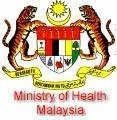Acute Pain Service(APS)
Contents
1)Methods of analgesia
2)Common drugs
3)Specific drug
METHODS OF ANALGESIA
1)PRE-EMPTIVE ANALGESIA
2)COMBINATION ANALGESIA
3)INTERRUPTION AT SPECIFIC SITES OF PAIN TRANSMISSION
PRE-EMPTIVE ANALGESIA
1) Analgesic drugs are given before any surgical incision
2) Concept that suppression of dorsal horn neuronal activity involved in pain pathway before painful stimulus (e.g. surgery)
3) It may reduce- operative pain -as evidenced by delayed request for additional post-op analgesia-doses of analgesia-pain scores
4) Techniques of suppression – local anaesthetic , epidural , spinal anaesthesia, NSAID and opiod analgesic.
COMBINATION
1)Opioids
2)NSAIDs
3)Nerve blocks
INTERRUPTION AT SPECIFIC SITES OF PAIN TRANSMISSION
1) REDUCED PERIPHERAL STIMULUS
e.g. NSAIDs
2)PERIPHERAL PAIN
.g. LA
3)CENTRAL PAIN TRANSMISSION
e.g.EPIDURAL
4)STIMULATION OF INHIBITORY PATHWAYS
e.g. opioids, acupuncture
COMMON DRUGS
1)OPIOIDS
morphine
pethidine
fentanyl
nubain
2)LOCAL ANAESTHETICS
lignocaine (lidocaine)
marcaine(bupivacaine)
Naropin (ropivacaine)
3)OTHERS
NSAIDs
Paracetamol
COMMON TECHNIQUES
1) SUBCUTANEOUS
- Morphine
2) PCA
-morphine
-pethidine
3) EPIDURAL ANALGESIA
-pethidine
- “LA + opioid cocktail”
-PCEA with pethidine
4) IV INFUSION
-morphine
-pethidine
-nubain
5) ITM(Intrathecal Morphine)
6) Oral/Supp. PCM/NSAIDs
(oral, supp, IM or IV)
SPECIFIC DRUGS
OPIOIDS
Narcotic - Greek narco, meaning deaden or numb
Morphine - Greek Morpheus, god of dreams, son of the god of sleep
Opium - is obtained from the unripe seed capsule of the poppy plant
Opiates - drugs derived from opium
Opioids - refers to all drugs natural & synthetic, that has morphine like properties and act through the opioid receptors in the body
NATURALLY OCCURRING:
1)MORPHINE
2)CODEINE
3)PAPAVERATUM (OMNOPON)
SYNTHETIC:
1)DIAMORPHINE (HEROIN)2)PETHIDINE3)FENTANYL4)NALBUPHINE(NUBAIN)5)TRAMADOL (TRAMAL)
SIDE EFFECTS
1) Sedation, euphoria,miosis
2)Respiratory depression
3)Nausea & Vomiting
4)Gastric stasis, ileus
5)Constipation
6)Urinary retentionPruritus
OPIOIDS : Morphine
Standard opioid
Clinically superior in relieving pain
Uses:moderate to severe pain, cancer
R&D: IM,SC: 0.1-0.2mg/kg & IV : 0.05-0.2mg/kg 4 hourly inf: 10-40mcg/kg/hr (adult/paed)ITM: 0.2mg
Peak effect: 20min(IV), 30-60min(IM)
OPIOIDS : Pethidine
-10 X less potent than morphine (100mg pethidine = 10 mg morphine)
-For moderate to severe pain
-R&D: Parenteral- 0.5-1.0mg/kg
infusion: 100-300mcg/kg/hr
epidural: 25mg or infusion: 10mg/hr
-Peak effect: 10 min(IV), 20-30 min(IM)
OPIOIDS : Fentanyl
-100 X more potent than morphine(0.1mg fentanyl = 10 mg morphine)
-Dose: 1 – 2 mcg/kg
-Duration: 30 – 60 min
-Uses: mainly for intraoperative analgesia as well as in epidural cocktails
OPIOIDS : Nubain
-Agonist-antagonist property
-Uses: moderate to severe pain
-R&D: IV,IM,SC :10-20mg 3-6 hourly
children :0.2-0.5mg/kg/dose
-Peak effect: 30min (IM)
-Duration: 3 – 6 hours
LOCAL ANAESTHETIC
2 type of Local Anaesthetic
1)AMIDE
LIGNOCAINE (XYLOCAINE)
BUPIVACAINE (MARCAIN)
ROPIVACAINE (NAROPIN)
2)ESTER
COCAINE
MODE OF ACTION
Block nerve conduction, prevent action potential by binding to Na+ channels
LA:Effects on organs
1)CVS : arrhythmias, hypotension, bradycardia, cardiac arrest
2)Resp.: depresses hypoxic drive, apnea
3)CNS: early:- circumoral numbness, tongue paraesthesia, dizziness,tinnitus, blurred vision
4)Excitatory signs: restless, agitation, nervousness
5)CNS depression: drowsiness, coma
THE RELATIONSHIP BETWEEN LIGNOCAINE PLASMA CONCENTRATION AND PHARMACOLOGICAL EFFECTS
PLASMA CONCENTRATION(mg/ml)
26 CVS depression
24
22
20 Resp arrest
16 coma
12 unconciousness
10 convulsions
8 muscular twitching
6 visual disturbances
4 lightheadness,tinnitus circumoralnumbness
2 antiarrhymias
LIGNOCAINE (common LA)
PREPARATION: LIGNOCAINE HCL0.5/1.0/1.5/2.0%
MAXIMUM DOSE : 5 mg/kg (plain)7 mg/kg (+ adr.)
BUPIVACAINE
PREPARATION: BUPIVACAINE HCL0.25 / 0.5 / 0.75%
EMLA 5%
-Topical local anaesthetic
-Eutectic Mixture of Local Anaesthetics
-An oil/water emulsion of lignocaine & prilocaine (1:1), melting point at 18ºC, liquid at room temp., penetrate the skin.
-Optimum effect : after a minimum of 60 min of application.1.5-2.0gm/10m2
-Duration: 30min.
-S/E: transient paleness or redness of skin, itchy, methaemoglobinemia-CAUTION:infant less than a year
NSAIDs
Mode of Action: by inhibiting the enzyme cyclooxygenase which is involved in the synthesis of PGs in the body (PGs- play a part in the transmission of pain)
Analgesic, anti-inflammatory & anti- pyretic action
Route: Oral : Mefenamic acid(ponstan), Naproxen sodium (synflex), Indomethacin, Diclofenac (voltaren), Vioxx, Celebrex. IM: Diclofenac, ketorolac & orudis IM&IV
SIDE EFFECTS
1) GIT irritation2) antiplatelet activity3) decrease renal blood flow, may precipitate ARF4) Allergic reactions
CONTRAINDICATIONS
1) H/O coagulopathy
2) peptic ulcer
3) renal impairment
4) H/O allergy to aspirin or other NSAIDs
PARACETAMOL(PANADOL)
An acetanilide derivative
Uses: an analgesic for mild to moderate pain & antipyretic
Preparation: tablet 500mg, supp.:125/250/500mg, syrup: 125/250/500mg per ml
Dosage: Adult (O&R) 500-1000mg 4-6hourly. Child (O) 10-15mg/kg (R) 15-20mg/kg 4-6hrly
S/E: GIT disturbances, hepatic necrosis (15gram/dose), renal failure, hypoglycemia

 P - atrial electrical activation
P - atrial electrical activation










